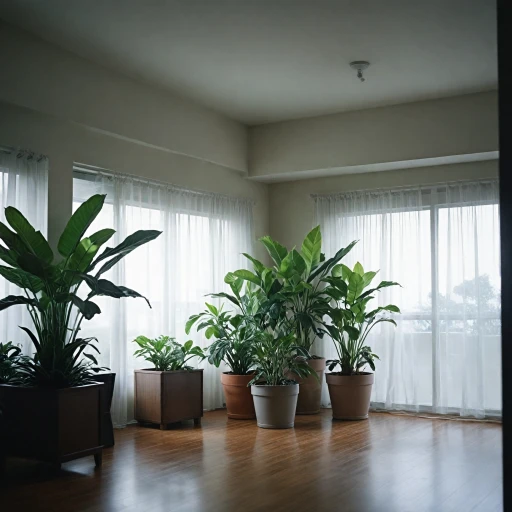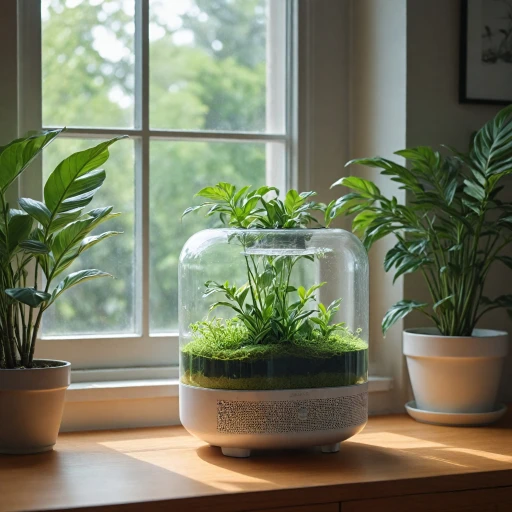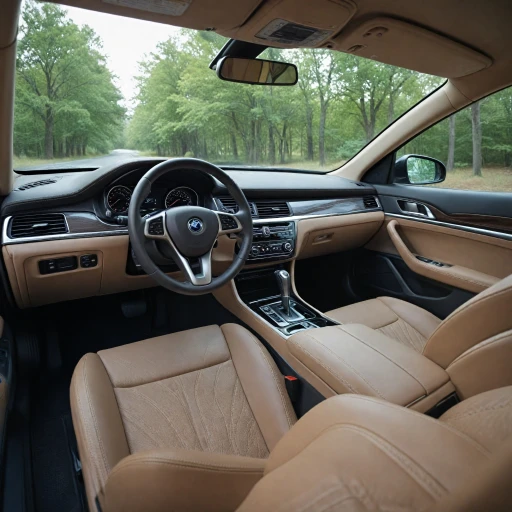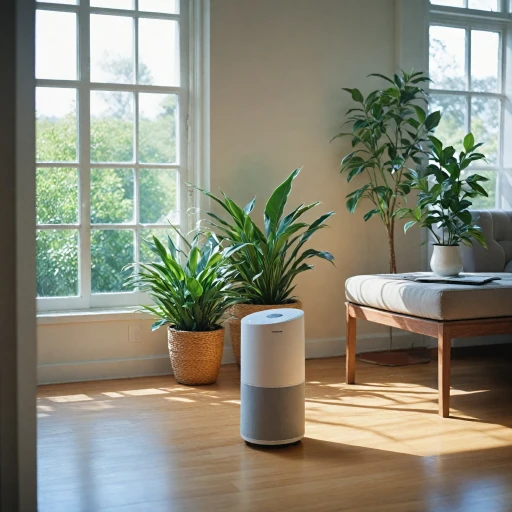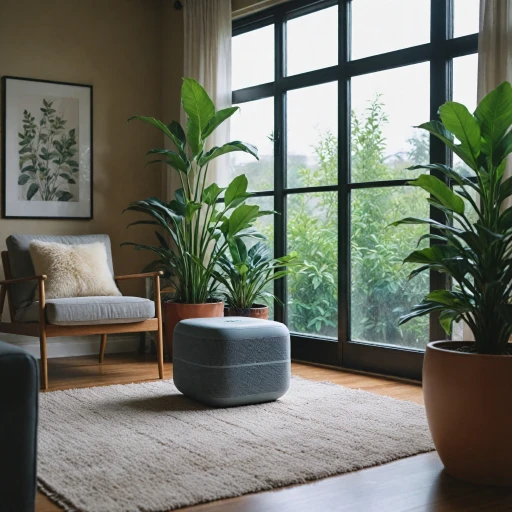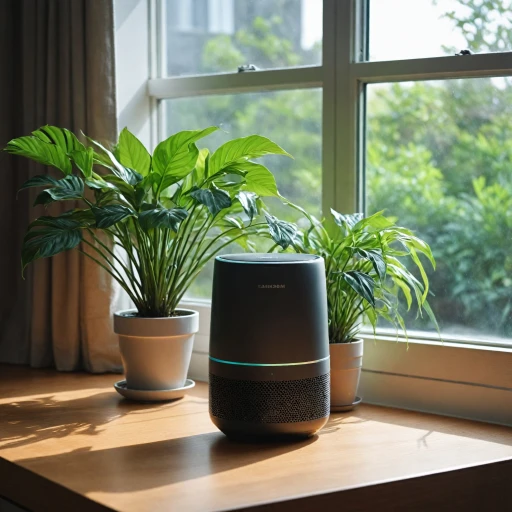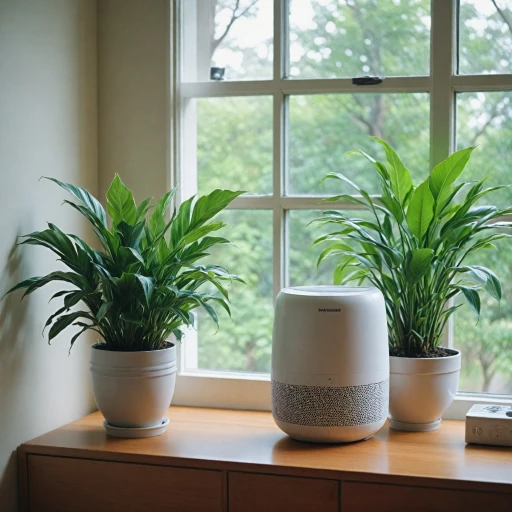
Understanding the Components of Cigarette Smoke
Decoding the Air Pollutants in Cigarette Smoke
Cigarette smoke is a complex mixture of gases and particulate matter, which poses a significant challenge for indoor air quality. Understanding its components is crucial to tackling the issue effectively. Air purifiers are designed to combat these pollutants, but how they perform against cigarette smoke can vary, depending on the purifier's technology and filter system. Cigarette smoke contains:- Nicotine: Known for its addictive properties, nicotine is only a part of the larger problem when it comes to smoke.
- Tar: This is a sticky, brown substance that can stain surfaces and contributes to respiratory problems.
- Carbon Monoxide: An odorless gas that, when inhaled, can be detrimental to health by inhibiting oxygen transport.
- Volatile Organic Compounds (VOCs): Such as benzene and formaldehyde, these chemicals are harmful with prolonged exposure.
- Particulate Matter: Tiny particles of unburnt tobacco and ash, which can be inhaled into the deepest parts of the lungs.
How Air Purifiers Work Against Smoke
Mechanisms Behind Smoke Filtration
Air purifiers deploy several technologies to tackle the complex challenge of removing cigarette smoke from indoor environments. These devices are specifically designed to improve air quality by filtering out the harmful particles found in smoke, ensuring cleaner and healthier air for breathing. The effectiveness of air purifiers is largely determined by the type of filters they use, which are crucial for handling smoke particles.
Firstly, the HEPA filter plays a significant role. True HEPA filters are renowned for their ability to trap fine particles as small as 0.3 microns with an impressive efficiency of 99.97%. This feature makes them highly effective against dust, pollen, pet dander, and especially cigarette smoke particles, which often contain a mixture of these contaminants.
Activated carbon filters are another essential component found in air purifiers aimed at smoke removal. These filters are adept at adsorbing odors and volatile organic compounds (VOCs) present in cigarette smoke. The porous nature of activated carbon traps these harmful gases and odors, mitigating the pervasive smell of smoke as well as potential health risks associated with inhalation.
The integration of pre-filters enhances the effectiveness of both HEPA and carbon filters by capturing larger particles such as dust and mold spores prior to air reaching the main filtration mechanisms. This not only extends the life of the primary filters but also improves overall filtration efficiency.
For those seeking a versatile solution, the combination of HEPA and activated carbon filtration in portable air purifiers is often considered the best choice. These products are available across different price ranges and vary in features like noise level and size, allowing consumers to find a unit that fits their specific needs. Popular models such as the Levoit Core series or Alen purifiers are regularly targeted when looking for high quality and effective smoke filtration.
Each product offers unique benefits and may vary in price and filtration capabilities. A thorough understanding of each component's function and the quality of the air purifier is crucial in choosing the right one for smoke. Investing in a high-functioning air purifier significantly enhances indoor air quality and minimizes exposure to secondhand smoke, ensuring a healthier environment for everyone.
Choosing the Right Air Purifier for Smoke
Choosing the Right Device for Smoke Reduction
When it comes to selecting the best air purifier to combat cigarette smoke, considering certain factors can greatly enhance the indoor air quality of your space.- Type of Filter: Look for a purifier that features a true HEPA filter, as it effectively traps tiny particles such as dust pollen, pet dander, and mold spores. Paired with an activated carbon filter, which absorbs odor and gases, this combination can efficiently remove cigarette smoke and odors.
- Particle Size: Cigarette smoke consists of tiny particles that can be challenging to eliminate. A higher efficiency rating on filters can ensure the removal of even the smallest particles from the air.
- Room Size: It's crucial to choose a purifier that matches the size of the room it will be used in. Consider its coverage area to ensure it operates efficiently.
- Noise Level: Consider the noise levels of the purifier. Some people prefer quieter models for bedrooms or living rooms, while others may not find noise to be an issue.
- Portability: For those who need versatility, portable air purifiers can be an excellent choice to move around your home as needed.
- Quality and Brand: Investing in a high-quality brand, such as Alen or Levoit Core, could make a difference in the reliability and longevity of your product.
- Price: Finally, consider your budget and balance the price with the features you need. While some options may be expensive, their features can justify the cost if they significantly improve your indoor air.
Benefits of Using Air Purifiers for Smokers and Non-Smokers
Impact on Both Smokers and Non-Smokers
Using an air purifier in an environment exposed to cigarette smoke can offer significant benefits for both smokers and non-smokers. Here’s how:- For Smokers: While smoking indoors is never ideal, air purifiers equipped with a HEPA filter alongside an activated carbon filter can reduce cigarette smoke odors and harmful particles. This means less lingering smoke and an overall fresher atmosphere.
- For Non-Smokers: Secondhand smoke poses serious health risks, but air purifiers can considerably mitigate these effects by capturing smoke particles and removing odors from the air. This results in cleaner indoor air quality, safeguarding against potential respiratory issues.
Improving Overall Air Quality
Beyond smoke elimination, air purifiers contribute to an enhanced living environment by maintaining the air’s purity, characterized by reduced dust and dander levels. A product featuring true HEPA filters designed to remove fine particles and a carbon pre filter for larger particles maximizes indoor air cleaning.Addressing Odors and Dust
With a proper air purification system in place, you won't just be tackling cigarette smoke. You'll also be combating odors and dust that accumulate, ensuring your home is a comfortable, healthy space. Remaining vigilant about the limitations and considerations associated with air purifiers can underline the importance of selecting a product that fits your specific needs and budget. From assessing the price to ensuring the filter’s quality, each factor is crucial to achieving the best air within your home.Limitations and Considerations
Potential Drawbacks and Factors to Consider
While air purifiers can significantly improve indoor air quality and mitigate the effects of cigarette smoke, there are some limitations and important considerations to keep in mind when choosing a product.
- Efficiency Variability: The efficiency of an air purifier can vary widely depending on its type, filters, and technology. True HEPA filters, combined with activated carbon filters, offer the best filtration of fine particles, dust, and smoke. However, not all purifiers have these filters, thus affecting their performance. Be sure to check the specifications of the filter technologies used in the purifier.
- Noise Levels: Noise can be a concern, especially when using an air purifier in a bedroom or quiet environment. High fan settings are often louder but may be necessary to maximize air cleaning capabilities, particularly against cigarette smoke. Consider models with adjustable fan speeds or look for quieter models if noise is a priority.
- Ongoing Costs: Although the price of an air purifier might seem reasonable initially, ongoing costs such as filter replacements should be factored into your budget. HEPA and carbon filters require regular changing to maintain optimal air quality, so investigate filter prices and replacement frequency when comparing products.
- Room Size Compatibility: Air purifiers are typically rated for certain room sizes. An undersized purifier may struggle to filter the air effectively in larger spaces, leading to unsatisfactory air quality outcomes. Verify the air purifier’s specifications to ensure it is appropriate for the room you intend to use it in.
- Air Circulation: It's important to recognize that air purifiers work best in rooms with proper air circulation. To maximize their effectiveness, position your purifier where it can draw in smoke and odors freely, avoiding obstructions such as curtains or furniture.
- Partial Solutions: While a purifier can substantially reduce smoke particles and odors, it does not entirely eliminate all airborne contaminants. It is most effective when combined with regular cleaning and ventilation practices to further improve air quality.
By taking these factors into account, you'll be better equipped to find an air purifier that aligns with your air quality needs, balancing effectiveness, cost, and comfort.
Maintenance Tips for Optimal Performance
Essential Steps to Maintain Air Purifiers
Ensuring the optimal performance of air purifiers involves regular maintenance, which is crucial for effective removal of cigarette smoke and other pollutants. Here are some practical maintenance tips to keep your purifier working efficiently:
- Replace Filters Regularly: True HEPA filters and activated carbon filters are vital for capturing particles and odors associated with smoke. Check the manufacturer's guidelines for the recommended replacement intervals. Regular filter changes are essential to maintain high air quality and prevent the recirculation of smoke, dust, and allergens back into the indoor air.
- Clean the Pre-Filter Periodically: Many air purifiers come equipped with a pre-filter that traps larger particles, like dust or pet dander, before they reach the main filter. Cleaning the pre-filter as per the specified instructions can enhance the lifespan of the primary filters and improve the overall filtration efficiency.
- Monitor the Noise Level: An increase in the noise level may indicate a problem with the product, such as clogged filters or a need for cleaning. Addressing these issues promptly can prevent further damage to the purifier and ensure it continues to operate quietly and efficiently.
- Avoid Overloading the Purifier: Consider the coverage area and capacity of your air purifier. Overloading a portable air purifier by using it in a space larger than its specification can reduce its filtration effectiveness against cigarette smoke and other pollutants.
- Check for Any Dust Accumulation: Regularly wiping down the exterior and accessible interior parts of the purifier can prevent dust build-up. Dust particles can hinder the intake of air and reduce the purifier's effectiveness over time.
Following these maintenance suggestions not only contributes to the longevity of your air purifier but also ensures cleaner air, enhancing the health and comfort of smokers and non-smokers alike. Whether you're struggling with secondhand smoke, dust, pollen, or other indoor air issues, proper upkeep of your purifier is key.

